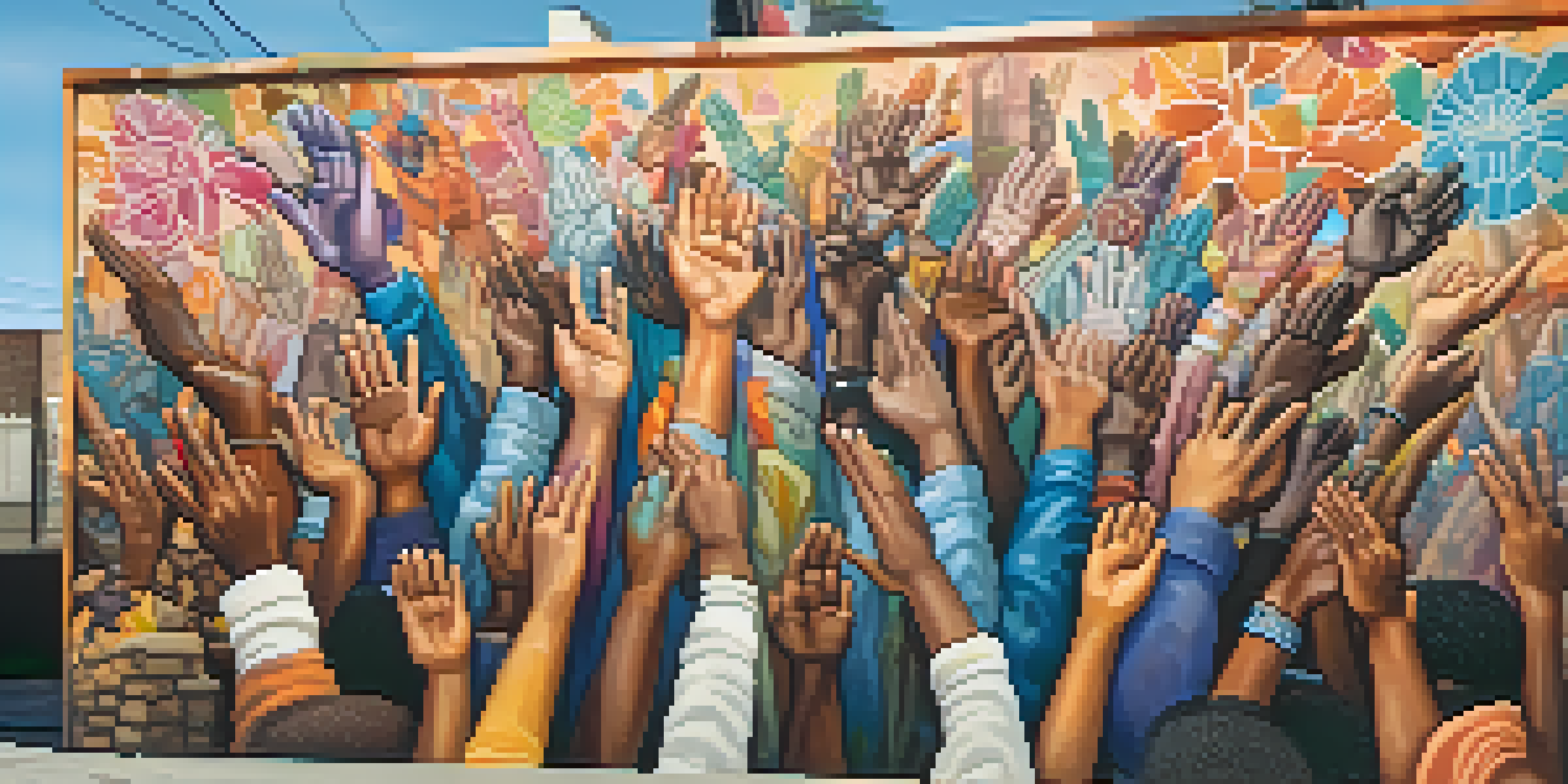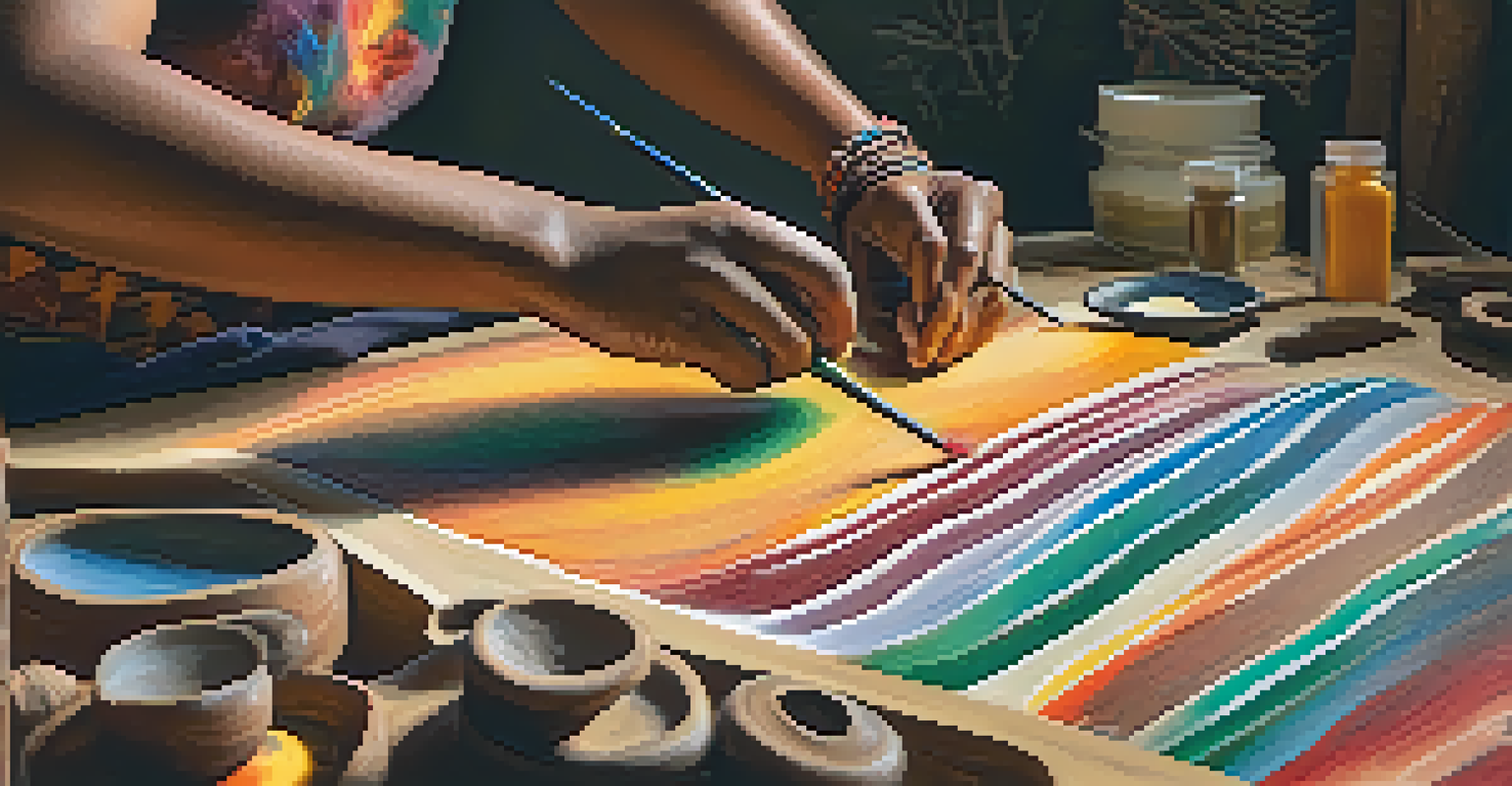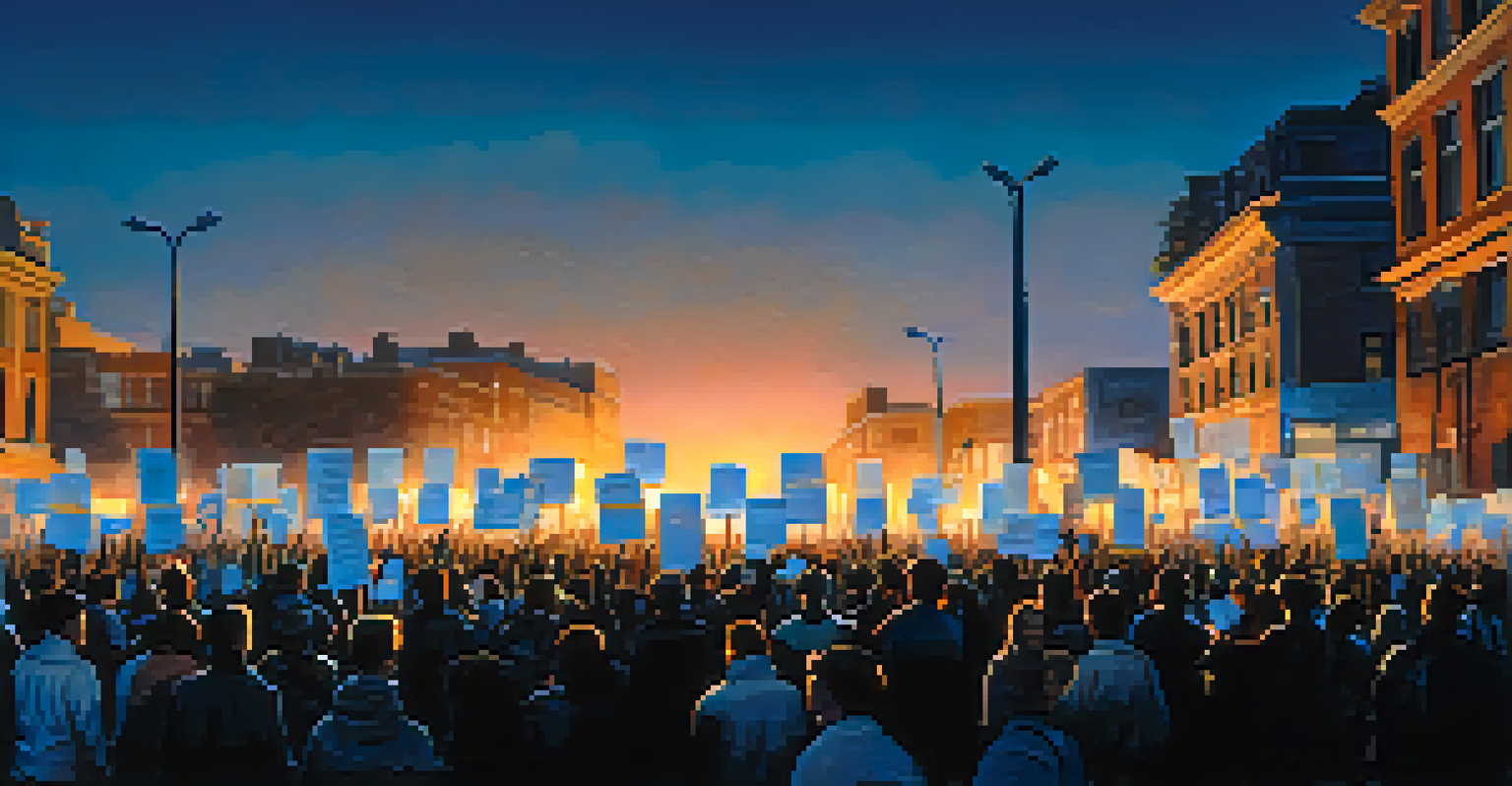Artistic Expression as a Form of Civic Resistance and Identity

Understanding Artistic Expression in Civic Contexts
Artistic expression has long served as a powerful vehicle for conveying societal issues and emotions. It transcends mere aesthetics, acting as a mirror reflecting the complexities of our world. Through various mediums—be it painting, music, or performance—artists communicate the struggles and aspirations of their communities.
Art is not a mirror to reflect the world, but a hammer with which to shape it.
In civic contexts, art becomes a tool for resistance, enabling individuals to voice dissent against oppression or injustice. For instance, street art can transform urban spaces into platforms for political commentary, often resonating deeply with the public. This form of expression not only raises awareness but also fosters a sense of solidarity among those who feel marginalized.
Moreover, the impact of artistic expression goes beyond immediate protest; it helps shape cultural narratives and identities. By documenting experiences and struggles, artists contribute to a collective memory that informs future generations. In this way, art is not just about individual expression but also about building a communal identity rooted in shared experiences.
The Role of Art in Civic Resistance Movements
Throughout history, art has played a crucial role in civic resistance movements, from the civil rights movement in the United States to the anti-apartheid struggle in South Africa. Artists have often used their talents to inspire action, evoke empathy, and galvanize support for change. For example, the song 'We Shall Overcome' became an anthem for civil rights, symbolizing hope and unity.

Visual arts, such as protest posters and murals, have similarly been instrumental in rallying communities. These artworks not only convey messages but also create a sense of belonging and shared purpose. They can transform public spaces into sites of resistance, inviting dialogue and reflection on pressing social issues.
Art as a Voice for Resistance
Artistic expression empowers individuals and communities to voice dissent and inspire social change against injustice.
In contemporary movements, social media has further amplified the reach of artistic expression in civic resistance. Platforms like Instagram and TikTok allow artists to share their messages with a global audience, making it easier to mobilize support and raise awareness. This digital dimension highlights the evolving landscape of civic engagement, where art continues to be a driving force.
Art as a Means of Identity Formation
Artistic expression is not just about resistance; it also plays a vital role in shaping personal and collective identities. Through art, individuals explore and affirm their cultural backgrounds, experiences, and values. This exploration can be particularly powerful in communities that have faced historical marginalization or erasure.
The role of the artist is to make the revolution irresistible.
For instance, Indigenous artists often utilize traditional techniques and themes to assert their identities and reconnect with their heritage. By doing so, they challenge dominant narratives and assert their place within the broader cultural landscape. This reclamation through art fosters pride and resilience, strengthening community bonds.
Furthermore, art can bridge generational gaps, allowing younger generations to engage with their ancestry while redefining it in contemporary contexts. Through this dynamic exchange, identities are not static; they evolve as artists draw inspiration from their past while envisioning a future that reflects their values and aspirations.
The Emotional Power of Art in Activism
One of the most compelling aspects of artistic expression in civic resistance is its emotional resonance. Art has the ability to evoke feelings that transcend words, making complex issues more accessible and relatable. A poignant song or a striking mural can stir emotions, prompting individuals to reflect on their own experiences and the world around them.
This emotional engagement often leads to a deeper understanding of social issues, fostering empathy among diverse audiences. For example, the powerful imagery of protest art can connect with people who may not have directly experienced the struggles depicted, encouraging them to support the cause. In this way, art acts as a bridge, linking disparate experiences and galvanizing collective action.
Cultural Identity Through Art
Art serves as a vital means for individuals to explore and affirm their cultural identities, fostering a sense of belonging.
Moreover, the sheer act of creating art can be cathartic for both artists and audiences alike. It provides a space for healing and processing emotions related to injustice and trauma. By channeling these feelings into creative outlets, individuals find empowerment and agency, reinforcing the notion that art is not just a reflection of society but also a catalyst for change.
Cultural Identity and Artistic Expression
Artistic expression is often intricately tied to cultural identity, serving as a means for individuals to express their unique heritage. Through various forms of art—be it dance, music, or visual arts—people celebrate their traditions and share their stories with the world. This cultural expression reinforces a sense of belonging and pride within communities.
In times of civic unrest, this sense of cultural identity can be a source of strength and resilience. For instance, during protests, traditional music and dance can invigorate spirits and foster unity among participants. These cultural practices remind individuals of their roots and shared history, enhancing their commitment to the cause.
Furthermore, the fusion of different cultural influences in artistic expression can lead to innovative forms of resistance. Artists often blend traditional and contemporary styles to create works that resonate with a wider audience. This intersectionality enriches the cultural landscape, highlighting the diversity and complexity of identity in the face of societal challenges.
The Future of Artistic Resistance in a Digital Age
As we move further into a digital age, the landscape of artistic expression continues to evolve. Artists are harnessing technology to amplify their messages and connect with audiences in new ways. From virtual exhibitions to interactive installations, the possibilities for artistic resistance are expanding, breaking down traditional barriers.
Social media platforms have become essential tools for artists to share their work and engage with global audiences. This democratization of art allows diverse voices to emerge, challenging mainstream narratives and fostering inclusivity. As a result, art can now reach people who may not have had access to traditional art forms, making civic resistance more accessible.
Digital Age of Artistic Expression
The evolution of technology and social media has transformed how artists share their messages, making civic resistance more accessible.
However, this digital shift also presents challenges, such as the risk of dilution of messages or oversaturation of content. Artists must navigate these complexities while remaining authentic to their vision. Ultimately, the future of artistic resistance lies in finding innovative ways to engage audiences while preserving the core values of empathy, solidarity, and social change.
Conclusion: Art as a Catalyst for Change and Identity
In conclusion, artistic expression serves as a vital form of civic resistance and identity formation. It empowers individuals to voice their experiences, challenge injustices, and celebrate their cultural heritage. Through art, communities can unite, fostering a sense of belonging and purpose in the face of adversity.
As we reflect on the role of art in civic engagement, it becomes clear that its impact extends far beyond aesthetics. Art has the power to evoke emotions, inspire action, and shape collective identities, making it an invaluable tool for social change. By embracing the diverse forms of artistic expression, we can cultivate a richer understanding of our shared humanity.

Looking ahead, it is essential to continue supporting artists and their work in civic contexts. By valuing and promoting artistic expression, we not only honor the voices of those fighting for justice but also nurture the potential for transformative change. Art is not just a reflection of society; it is a driving force that can shape our future.